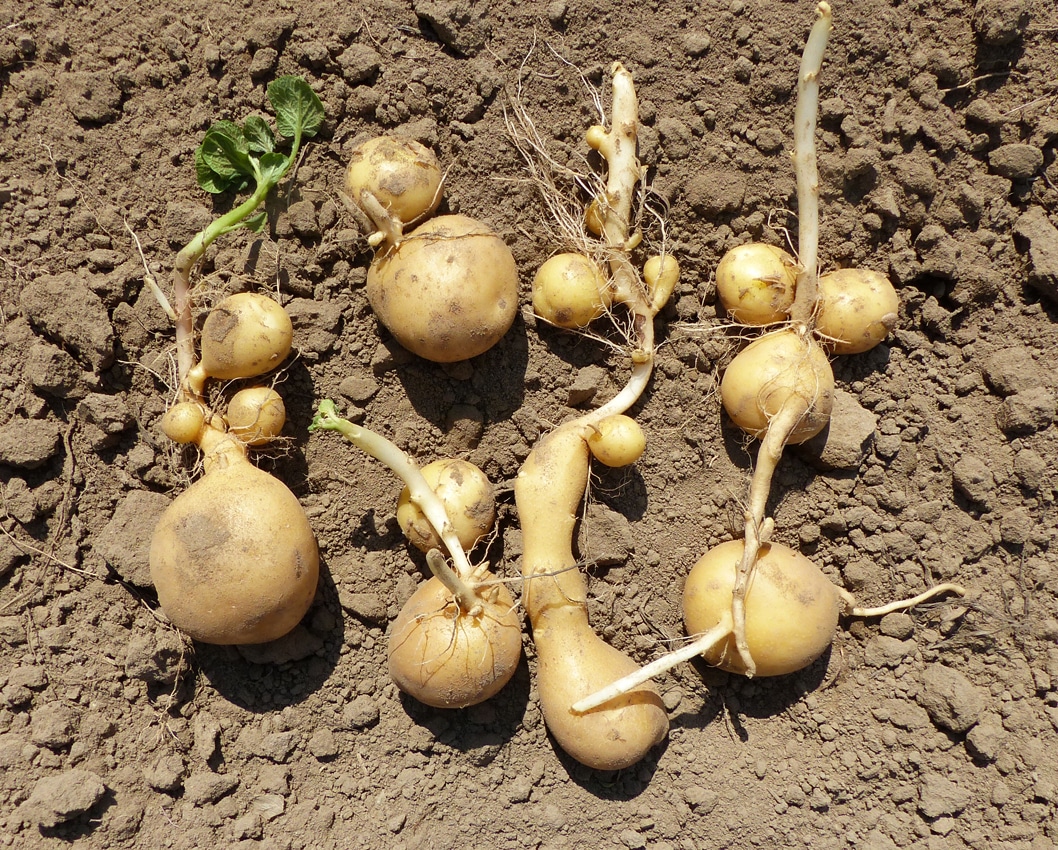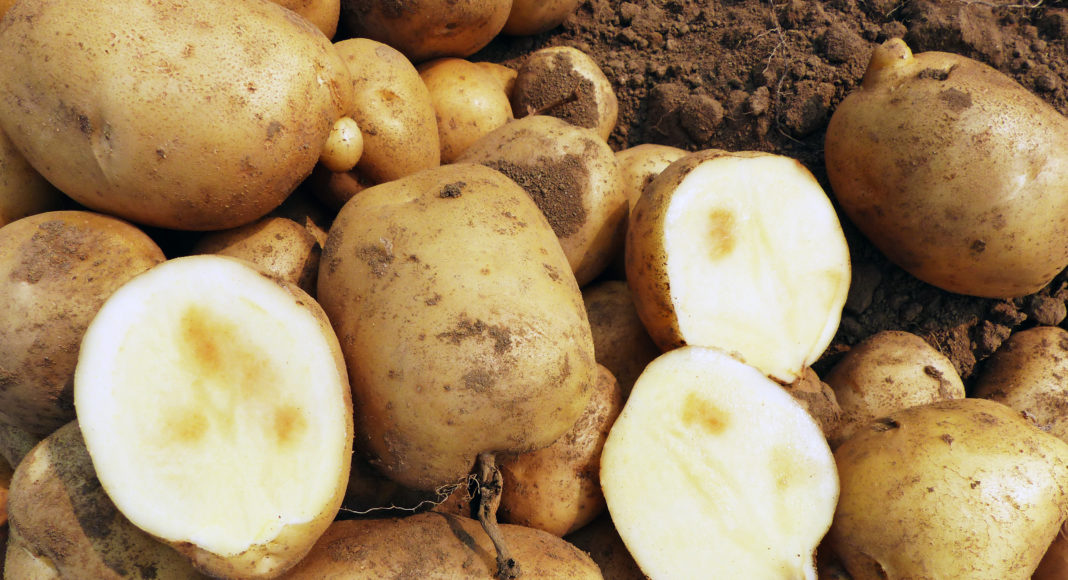Heat during the growing season is causing disease problems for potato growers.

Hot, dry summers have become more prevalent in Ontario and elsewhere during the last four years. Potato productivity is greatly reduced at high temperatures, above 30 C during the day and 25 C at night. High temperatures reduce yield, cause secondary tuberization and increase physiological defects on tubers. The effect will depend on the variety and the stage of growth, but in general the earlier a heat wave occurs, the more negative its impact.
High temperatures during tuber initiation increase the respiration rate using up energy and reducing tuber set. A high respiration rate mid-season or later may cause the production of a second set of tubers which never size up — high temperatures during bulking slow down tuber bulking resulting in yield losses.
Important physiological disorders caused by high temperatures are:
- Tuber deformations: Deformations are primarily caused by high temperatures which stimulate cell division and reduce the availability of carbohydrates by increasing respiration. Water stress does not in itself cause deformations, but drought exacerbates the deformations caused by high temperatures. The higher the temperatures and the longer the heat wave, the greater the effect.
Examples of tuber malformations are dumbbell shaped tubers, pointed bud-end or pointed stem-end tubers and kidney-shaped tubers. Knobby tubers are produced when the apical dominance of the bud end is reduced resulting in secondary growth at the lateral eyes of the tuber.

- Translucent End and Jelly End Rot: High temperature and water stress during the early stages of tuber growth may interfere with starch deposition at the stem end of the tuber. Often the tissue of tubers affected with Translucent End breaks down — this breakdown is called Jelly End Rot. Usually pointy bud-end tubers develop Jelly End Rot.
- Growth Cracks: Growth cracks develop when relatively poor growing conditions switch rapidly to relatively good growing conditions — this could be hot, dry weather followed by excessive irrigation or heavy rainfall and a drop in temperatures.
- Heat Necrosis: Heat necrosis occurs when a period of slow tuber growth is followed by active tuber growth at high temperatures. Light to dark brown necrotic spots form in the vascular tissue of the tubers. The varieties Chieftain and Atlantic are very susceptible to heat necrosis.
- Internal Brown Spot (IBS): Light brown necrotic spots will develop anywhere in the tuber flesh at the latter stages of tuber growth. IBS is often due to an enzymatic disorder caused by intense heat or excessive drought. It has also been associated with calcium deficiency.
- Second Growth: Potato plants respond to temperatures of 30 C and above by increasing vegetative growth rather than setting tubers or bulking tubers. This can result in heat sprouts and chain tubers or heat runners in susceptible varieties.
- Blackheart: Any pre-harvest, transit or storage conditions which prevent oxygen from reaching the center of the tuber will result in blackheart. Long exposure of tubers to field temperatures above 32 C before harvest usually result in blackheart.
- Physiologically old tubers: Heat stress increases physiological age drastically. Physiologically old tubers tend to sprout early, produce more stems, and cause little potato formation defect.
Calcium fertilization with a water-soluble form of calcium during bulking can mitigate the adverse impact of heat stress on tuber yield. The best way to apply calcium during the growing season is to side dress Ca(NO3)2and then irrigate, according to Jiwan Palta at the University of Wisconsin.

